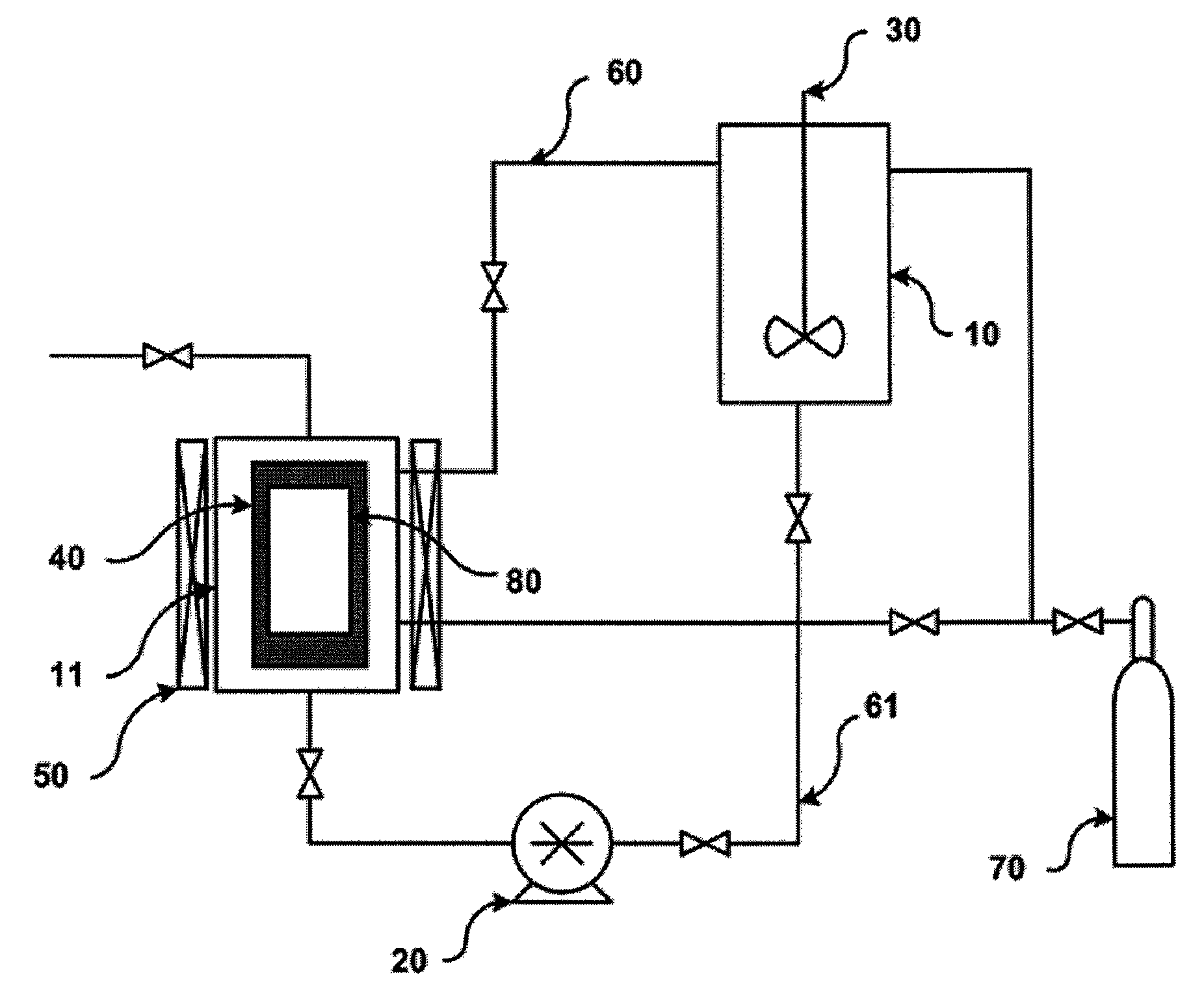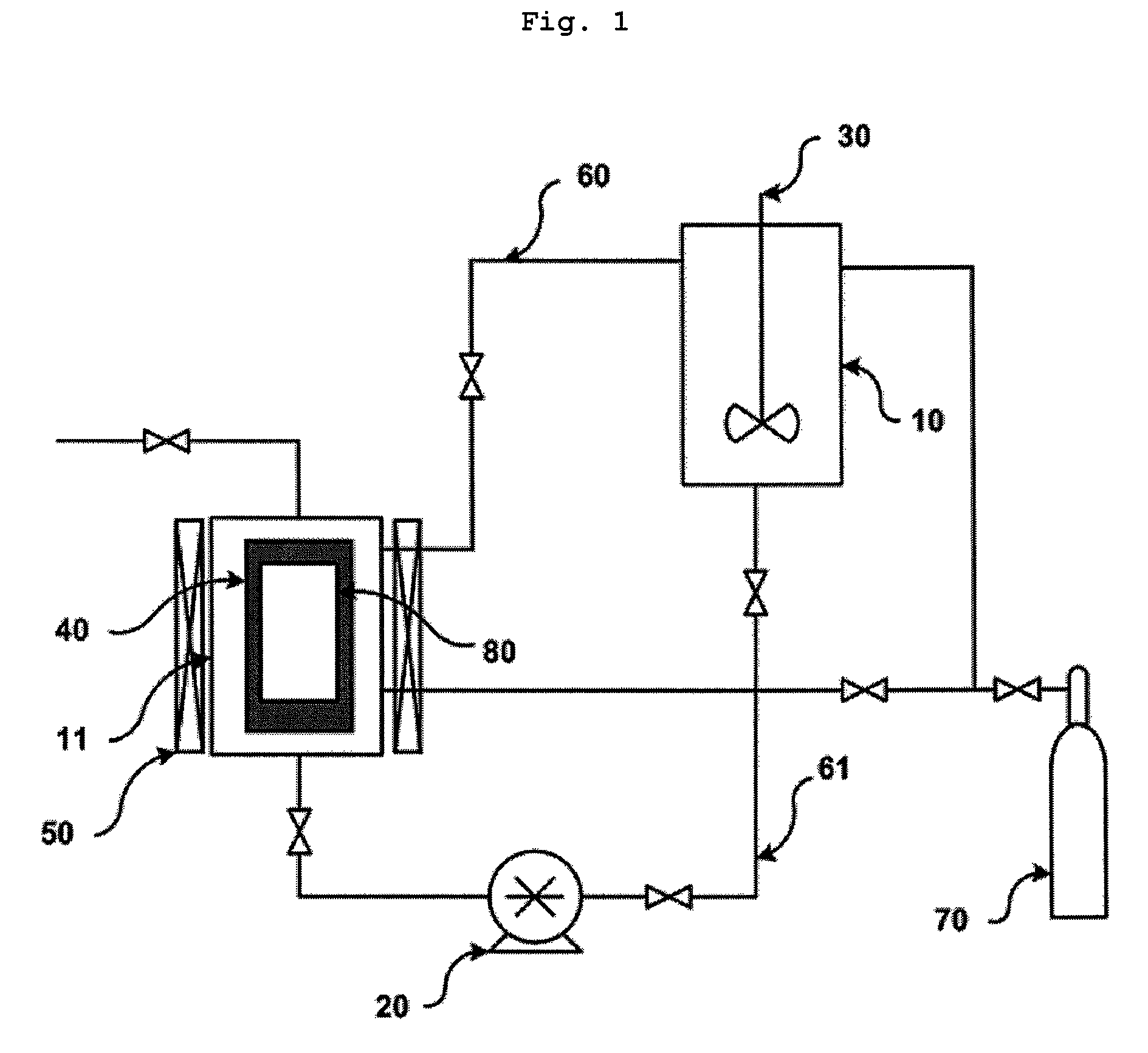Method of manufacturing hydrophilic membrane having improved antifouling property and hydrophilic membrane manufactured by the method
a hydrophilic membrane and anti-fouling technology, which is applied in the direction of filtration separation, pretreatment surfaces, separation processes, etc., can solve the problems of rapid decrease of permeation flux, adsorption of membrane pores and membrane pores, and adsorption of membrane pores and closing of membrane pores, etc., to achieve excellent hydrophobic membrane properties such as thermal stability, chemical stability and mechanical strength, and low protein adsorption. , the effect of high permeation flux
- Summary
- Abstract
- Description
- Claims
- Application Information
AI Technical Summary
Benefits of technology
Problems solved by technology
Method used
Image
Examples
example 2 and example 3
, Example 2 and Example 3;
[0026]FIG. 5 illustrates permeation results obtained when penetrating a solution containing 1,000 mg / L of BSA into a PDVF MF membrane hydrophilicized after cleaning; and
[0027]FIG. 6 shows protein adsorption characteristics of the PDVF MF membrane contaminated after penetrating a solution containing 1,000 mg / L of BSA into a PDVF MF membrane hydrophilicized after cleaning.
EXPLANATION OF REFERENCE NUMERALS FOR MAIN PORTIONS IN DRAWINGS
[0028]10: High pressure solution vessel[0029]11: High pressure coating vessel[0030]20: High pressure pump[0031]30: High pressure magnetic stirrer[0032]40: Internal heater[0033]50: External heater[0034]60: Gas passage line[0035]61: Solution transfer line[0036]70: Supercritical fluid or subcritical fluid vessel[0037]80: Membrane
DESCRIPTION OF THE PREFERRED EMBODIMENTS
[0038]Features and advantages of the present invention will be more clearly understood by the following detailed description of the present preferred embodiments by re...
example 1
[0071]1 g of polyethylene glycol diacrylate (PEGDA, Mn of 575 g / mol) containing a hydrophilic functional group and a cross-linking reaction-enabling group was introduced into a high pressure solution vessel of 1500 ml of which a temperature was controlled to 15° C., and 0.03 g of 2,2′-azobis(2-methylpropionitrile) (AIBN) as an initiator was introduced into the high pressure solution vessel. 1200 ml of liquid carbon dioxide was introduced into the high pressure solution vessel to adjust the monomer concentration to 0.1% by weight, and a pressure of the vessel was controlled to 50 bars. The solution was stirred for 2 hours by a high pressure magnetic stirrer to prepare a uniform coating solution. After adjusting a polyvinylidene difluoride (PVDF) MF membrane having an average pore size of 0.45 μm and a thickness of about 30 μm to a size of 20×10 cm2 and fixing the size-adjusted PVDF MF membrane to an internal heater having a size of 21×11 cm2 installed in a high pressure coating vesse...
example 2
[0072]A hydrophilicized PVDF MF membrane was manufactured by the same method as in the Example 1 except that 4.95 g instead of 1 g of polyethylene glycol diacrylate (PEGDA, Mn of 575 g / mol) containing a hydrophilic functional group and a cross-linking reaction-enabling group was used, and 0.16 g instead of 0.03 g of 2,2′-azobis(2-methylpropionitrile) (AIBN) as an initiator was used.
PUM
| Property | Measurement | Unit |
|---|---|---|
| pressure | aaaaa | aaaaa |
| temperature | aaaaa | aaaaa |
| pressure | aaaaa | aaaaa |
Abstract
Description
Claims
Application Information
 Login to View More
Login to View More - R&D
- Intellectual Property
- Life Sciences
- Materials
- Tech Scout
- Unparalleled Data Quality
- Higher Quality Content
- 60% Fewer Hallucinations
Browse by: Latest US Patents, China's latest patents, Technical Efficacy Thesaurus, Application Domain, Technology Topic, Popular Technical Reports.
© 2025 PatSnap. All rights reserved.Legal|Privacy policy|Modern Slavery Act Transparency Statement|Sitemap|About US| Contact US: help@patsnap.com



